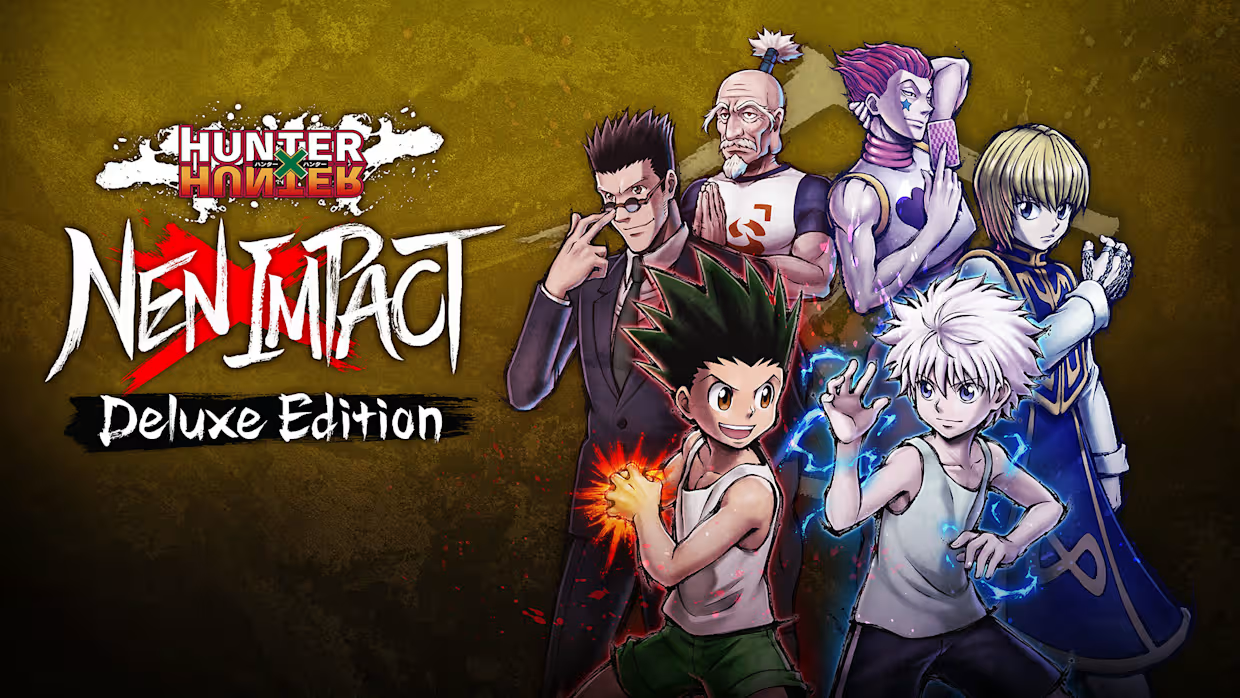Hunter x Hunter: Nen Impact Review – Style, Strategy & Shonen Spirit
“Know your opponent. Control your aura. Respect the rules of Nen.”
If you’re a fan of Hunter x Hunter, that quote hits deep — and Nen Impact, the newest fighting game based on the legendary manga/anime, takes it seriously.
Hunter x Hunter: Nen Impact is an arena-style 3D fighting game developed by a new team under Bandai Namco’s anime division. Released across PC, PS5, Xbox Series X/S, and Nintendo Switch, it attempts to faithfully translate the world of Nen combat into a high-speed multiplayer experience.
But does it stick the landing?
Let’s break it down.
Gameplay: Faithful to Nen, But Accessible
First, the good news: Nen Impact plays great. It strikes a solid balance between accessible mechanics for anime fans and deeper strategic systems for fighting game veterans.
You’ll choose from a roster of 20+ iconic characters — Gon, Killua, Hisoka, Kurapika, Chrollo, and more — each with:
- A unique Nen type (Enhancer, Specialist, etc.)
- Individual aura abilities
- Custom combos and ultimate finishers
Combat is arena-style, similar to Jump Force or Naruto Storm, with 1v1 and 2v2 team modes. Movement is fluid, with sidestepping, dashes, jumps, and aura-powered blocks. The Nen Charge system is key — letting players use and manage aura in real-time to boost attacks, counter, or activate special moves.
Strategy matters: Knowing your Nen type’s strengths/weaknesses can turn the tide of a fight.
Depth or Flash?
Don’t expect Tekken-level depth, but Nen Impact does reward skill and smart play. It’s not just button mashing:
- Chain combos require timing
- Aura-based clashes (Nen Rush) feel tense and cinematic
- Each character has custom skill trees you can develop over time
Casual fans will love the visuals and familiar moves, while competitive players might crave tighter mechanics — but as an anime-based fighter, Nen Impact delivers enough depth to stay fun over time.
Story Mode & Content
Nen Impact includes a story campaign covering:
- Hunter Exam Arc
- Heavens Arena
- Yorknew City
- Hints of Chimera Ant content in post-launch updates
The campaign is voiced (English & Japanese), featuring beautifully animated cutscenes and battles that blend narrative and gameplay.
There’s also:
- Local & online versus
- Ranked matches
- Character challenges
- Custom room battles with up to 4 players
The developers promise regular updates, including new characters and events — and yes, Meruem and the Royal Guard are teased.
Visuals & Style
The game runs on a cel-shaded anime engine similar to Dragon Ball FighterZ and Demon Slayer: Hinokami Chronicles, and it looks fantastic.
- Characters are highly detailed, with expressive faces and animations
- Nen abilities glow with power and variety: electricity crackles from Killua, chains shimmer from Kurapika
- Ultimate attacks (like Gon’s rage mode) are anime-accurate, frame-by-frame
Each arena is ripped from the anime with love: Heavens Arena, Zoldyck Estate, Yorknew underpass, and more.
Sound Design & Music
Sound design is solid across all platforms. Voice work is authentic, using most of the original Japanese anime cast and solid English dubs.
The soundtrack remixes iconic HxH themes while introducing new high-energy battle tracks that work well for each fight. Punches land with weight, and aura clashes rumble through speakers or headset.
Performance – Platform Breakdown
PC (Steam/Deck):
Runs at 60–120 FPS with full customization
Supports controller + keyboard play
Occasional netcode hiccups in online ranked
PS5 / Xbox Series X|S:
Smooth performance with fast load times
Native 4K resolution + HDR
Haptics and adaptive triggers on PS5 feel great
Nintendo Switch:
30 FPS with reduced textures
Some load delays, but gameplay is intact
Not the best platform for competitive play — but solid for casual/local matches.
System Requirements
Minimum:
OS *: Windows 8/10 (64-bit OS required)
Processor: Intel Core i7-3770, 3.40 GHz
Memory: 8 GB RAM
Graphics: GeForce GTX 660
DirectX: Version 11
Storage: 16 GB available space
Sound Card: DirectX compatible soundcard or onboard chipset